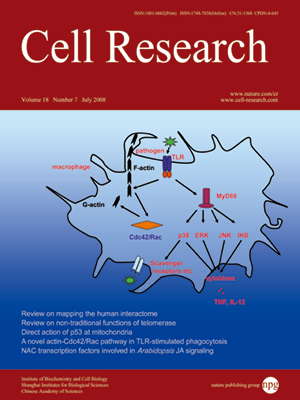
Volume 18, No 7, Jul 2008
ISSN: 1001-0602
EISSN: 1748-7838 2018
impact factor 17.848*
(Clarivate Analytics, 2019)
Volume 18 Issue 7, July 2008: 733-744
ORIGINAL ARTICLES
p53's mitochondrial translocation and MOMP action is independent of Puma and Bax and severely disrupts mitochondrial membrane integrity
Sonja Wolff1,2, Susan Erster1, Gustavo Palacios1 and Ute M Moll1,2
1Department of Pathology, Stony Brook University, Stony Brook, NY 11794, USA
2Department of Molecular Oncology, GZMB, University of G鰐tingen, 37077 Göttingen, Germany
Correspondence: Ute M Moll(umoll@notes.cc.sunysb.edu)
p53's apoptotic program consists of transcription-dependent and transcription-independent pathways. In the latter, physical interactions between mitochondrial p53 and anti- and pro-apoptotic members of the Bcl2 family of mitochondrial permeability regulators are central. Using isogenic cell systems with defined deficiencies, we characterize in detail how mitochondrial p53 contributes to mitochondrial permeabilization, to what extent its action depends on other key Bcl2 family members and define its release activity. We show that mitochondrial p53 is highly efficient in inducing the release of soluble and insoluble apoptogenic factors by severely disrupting outer and inner mitochondrial membrane integrity. This action is associated with wild-type p53-induced oligomerization of Bax, Bak and VDAC and the formation of a stress-induced endogenous complex between p53 and cyclophilin D, normally located at the inner membrane. Tumor-derived p53 mutants are deficient in activating the Bax/Bak lipid pore. These actions are independent of Puma and Bax. Importantly, the latter distinguishes the mitochondrial from the cytosolic p53 death pathway.
Cell Research (2008) 18:733-744. doi: 10.1038/cr.2008.62; published online 27 May 2008
FULL TEXT | PDF
Browse 2155


